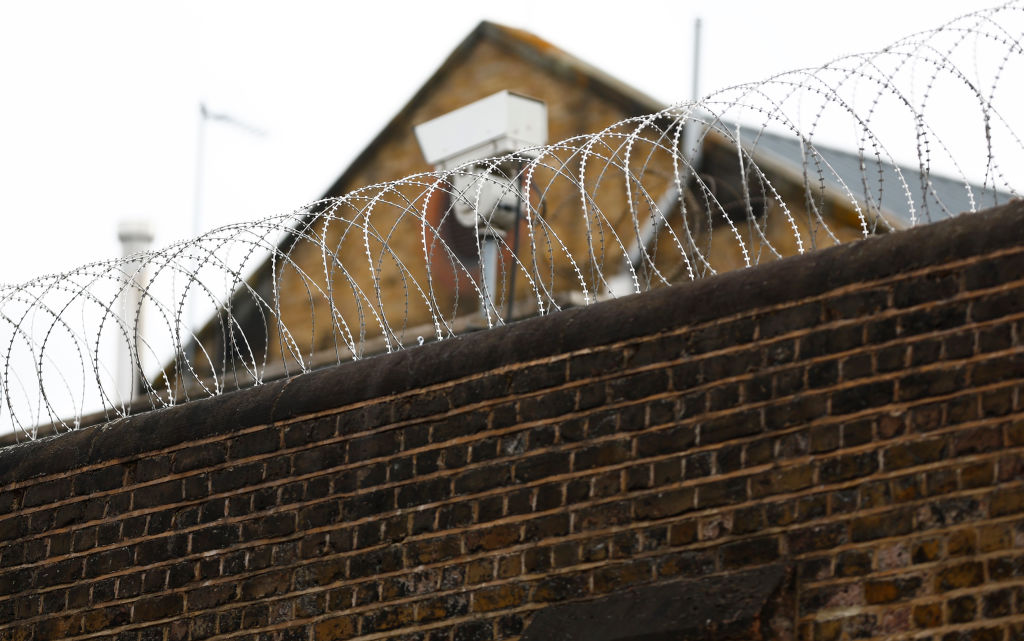Charlie Taylor, the chief inspector of prisons, has issued an urgent notification to the justice secretary about HMP Bedford, a category B reception facility. It is the second such notification in five years. In his letter to Alex Chalk, Taylor – whose Spectator writings on prison conditions can be read here – outlines the findings of an unannounced inspection between 30 October and 9 November. The picture he paints is of conditions that are not merely shabby but sordid.
Safety: poor. Respect: poor. Purposeful activity: poor. Preparation for release: ‘not sufficiently good’. The use of force against prisoners was ‘very high’ and inspectors found ‘too many examples of excessive force’ and ‘unprofessional behaviour’ by staff. Overall levels of violence were also ‘very high’ and Bedford has the grim distinction of having more attacks on staff than any other adult male prison in the country. Mental health services were ‘inadequate’, especially troubling since Bedford has the third-highest rate of prisoner self-harm. The draft inspection report notes an 84 per cent increase in self-harm on the previous inspection last year. In that time, more than 500 incidents were recorded.
Broken windows and black mould abounded. Cells for new prisoners were ‘dirty’ and ‘graffitied’
The wings were ‘dirty’ with ‘widespread infestation of rats and cockroaches’. Broken windows and black mould abounded. Cells for new prisoners were ‘dirty’ and ‘graffitied’. The segregation unit was ‘squalid’, with staff ‘forced to use sandbags and wear wellington boots due to overflowing sewage pipes after heavy rain’. The report says flooding is ‘regular’, the cells ‘dilapidated’ and ‘unsuitable for their purpose’. Three in four inmates were living in overcrowded conditions and 67 per cent spent no more than two hours a day out of their cell, limiting their ability to do domestic tasks. Education, training and work were ‘regularly cancelled’ because of staff shortages; prison unemployment was commonplace; and only half of prisoners enrolled on education programmes actually attended.
Security is a paramount concern at Bedford following the escape last year of a prisoner supposedly under ‘constant supervision’ but the report finds ‘substantial weaknesses’. For one, the local security strategy had been deleted by a past manager. Mandatory drug testing was not being carried out. Troublingly, prisoners, staff and managers reported witnessing racist incidents, though neither the letter nor the report does into detail.
Some of our prisons are called Victorian. Bedford is just grotesque. The Justice Secretary has 28 days to respond to the notification but that is insufficient time to come to terms with the scale and scope of failure at this prison.
Every prison is different. What ails Bedford isn’t what ails HMP Wandsworth and the changes that would improve Wandsworth wouldn’t necessarily improve HMP Eastwood Park, but what they and most prisons have in common is that they are at the mercy of an endemic failure of political leadership. That failure is not owned exclusively by Conservative governments but by Labour ones too; not only by Westminster, where bang-‘em-up rhetoric is popular, but by Holyrood, where ministers speak the buzzword bingo of criminal justice reform studies. Rhetoric is cheap and easy, which is why we have so much of it, but confronting the core problems in our prisons – there are no applause lines in that.
Those problems are straightforward enough. Safety: UK prisons are not safe. Many will tell you they care not a jot for prisoners’ safety but indifference comes at a price. Already this year courts in Germany and Ireland have refused to extradite people accused of serious offences in the UK because conditions in British jails might contravene their rights under the ECHR. (A timely reminder that, even if Britain withdrew from the Convention, it would not be entirely free of it.)
Capacity: Two-thirds of prisons in England and Wales are overcrowded. The knock-on effects for prisoner behaviour, staff workload, safety and compliance make running a prison, already an onerous task, all the more difficult. Dignity: A 2018 Howard League study identified seven British prisons where a majority of inmates were unable to clean themselves daily. An Observer investigation in May found there had been 1,000 reported rapes and more than 2,000 sexual assaults in British prisons since 2010, though those numbers are thought to be a fraction of how many incidents of each have occurred.
Prisons stand no chance of reducing crime if they are unsafe
Effectiveness: One in four prisoners goes on to reoffend and, according to the Ministry of Justice, the recidivism rate has remained broadly flat since 2008. In the last year pre-Covid, there were 12,000 ex-prisoners homeless or sleeping rough, when stable accommodation is thought to reduce the risk of reoffending by half. Purpose: Policy on prisons in unclear as to what it aims to achieve. Is it punishment or deterrence, rehabilitation or incapacitation? The Ministry of Justice will spend £7 billion on prisons this year but what that actually gets us is opaque at best.
I know how this sounds: like liberal handwringing for toe-rags who are banged up for a good reason. But whether you’re a bleeding heart or you want to chuck the key far away, prison reform is in your interests. Prisons stand no chance of reducing crime if they are unsafe, overcrowded, undignified and ineffective, and will never measure up to the public’s expectations when those expectations are imprecise and ever-changing. We need to rethink why we want prisons, who should be in them, how many should be in them, what they should be like, and how we measure their efficacy. That will require courage and vision but above all political leadership.







Comments